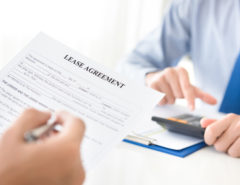Why I'm not worried about Fake Reviews
 A question we sometimes get from businesses and consumers alike is "how do we know the reviews are real?".
A question we sometimes get from businesses and consumers alike is "how do we know the reviews are real?". It seems that most people are confident in reviews – in fact a recent Nielsen survey found that 78% of people trust consumer recommendations above ALL other types of advertising and marketing.
This makes sense – after all, we've been relying on reviews by "professionals" for eons (think movies reviewers, restaurant critics, etc). These are just one datasource, whereas reviews by real people like us give us many different points of view.
But given how powerful reviews can be, maintaining their integrity is certainly something we treat very seriously. We've spent plenty of time developing and refining our systems to ensure everyone can rely on our reviews. In fact, we go to extreme lengths to fish out the small minority of people that try to abuse the system. Because of this, I know that reviews can be trusted.
Here's a brief explanation of the three approaches we take to quality control…
1) Smart Technology
We use a number of automated checks to hunt down fake reviews. We obviously can't explain the exact filters, but we can say that if someone tries to submit an untruthful review, it's likely to trigger our "suspect review process". This code looks at a number or different factors and combines them determine the likelihood of each review being fraudulent.
2) Reviewers' TrustFactors
In real life, we trust different people differently. Someone we know a lot about, that has given us reliable recommendations before can be trusted much more than someone we've just met that has never given us a recommendation. On WOMO, we replicate this with the member TrustFactor. Reviews from members with a low TrustFactor do not have as much weighting as reviews from members with a high TrustFactors. To build up a high TrustFactor, users have to provide verifiable contact details and gain a reputation on WOMO.
3) Community Sensibility Checks
When users or businesses or our team see something that doesn't seem right, these are flagged for us to review. Anyone can do this by ticking the "Inappropriate or Suspect" box which appears after each review. Based on the feedback, we then assess the review and either contact the reviewer to verify details, or remove the review entirely if it breaches our Fair Play Policy. Most fake reviews give themselves away by being too over-the-top and totally unbalanced. In a sense, the whole community helps clean up any misleading reviews.
But what if…
Even if false reviews get through these hurdles, they are usually corrected later. Consider the two possible types of deceptive reviews;
- A fake negative review by someone that's out to get a business (a competitor or disgruntled employee).
- A fake positive review entered by the business themselves (or by friends/family they enlist)
In the first case, these are found and queried by the business owners pretty quickly as most businesses have automated alerts and/or regularly Google themselves – all businesses should do this as a matter of course. (Businesses that claim their listing on WOMO get emailed whenever they're reviewed.)
In the second case, if a business somehow gets some fake positive reviews published, they'll pretty quickly start getting customers coming to them from WOMO. If their service doesn't live up to those reviews, they'll soon start getting some negative reviews. So in a sense, the system is self-correcting.
Consumer reviews aren't perfect and there's going to be the odd instance of false reviews sneaking in, but these are by far the minority, and reviews are still the best way that I know to find and choose great businesses. Personally, I've discovered heaps of great businesses based on other people's reviews (and I know others are enjoying using lots of businesses I've recommended).













Leave a Reply